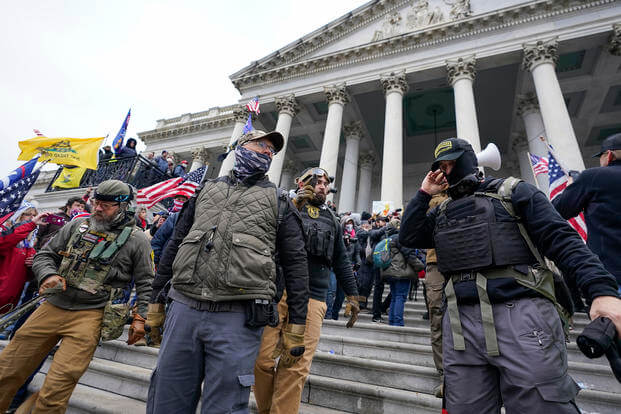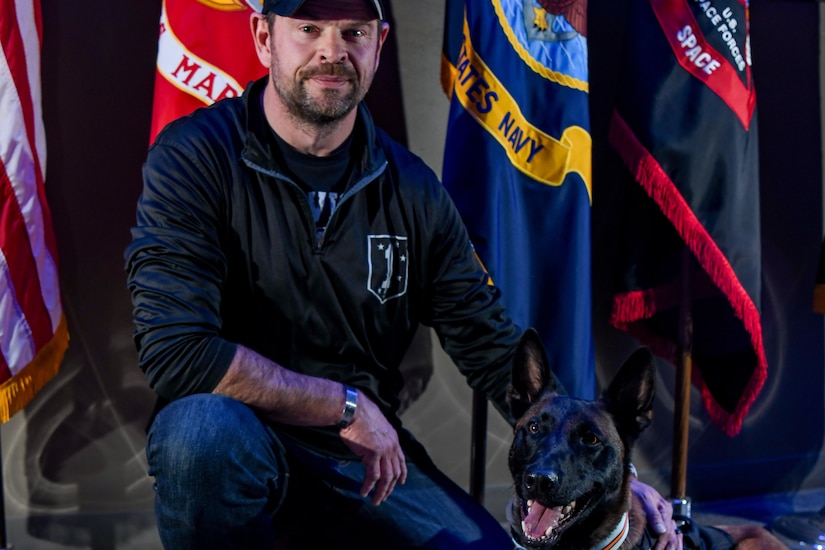
The Pentagon inspector general has scrapped plans to investigate the military's training for identifying and countering extremism in the ranks -- saying the project does not align with President Donald Trump's executive orders, according to a memo obtained by Military.com.
The watchdog's directive, issued Feb. 25, abruptly halted an ongoing assessment of how military branches implement counter-extremism training, particularly efforts targeting radical organizations, white nationalist groups and militias such as the Oath Keepers, Proud Boys and the Ku Klux Klan.
The decision to drop the review is the latest shift of Pentagon policy under Trump, who fired Defense Department Inspector General Robert Storch[1] without providing 30 days' notice to Congress as required by law. The president also pardoned convicted Oath Keepers and Proud Boys members[2] who rioted at the U.S. Capitol on Jan. 6, 2021.
Read Next: 83,000 VA Employees Slated to Be Fired This Year by Musk's DOGE, Memo Says[3]
Storch, along with the Department of Veterans Affairs[4] inspector general and the inspectors general for six other agencies fired by Trump just days into his term, filed a lawsuit in February calling the terminations illegal[5]. The inspectors general are independent and tasked with identifying waste, fraud and abuse at federal agencies.
The IG memo also eliminates an ongoing review -- that produced a draft report in January -- of the Air Force[6]'s recruitment[7] and retention programs aimed at boosting the number of female pilots, which has been met with sharp criticism from military watchdogs and advocacy groups.
The memo was signed by Brett Mansfield, deputy inspector general for audit, and Michael Roark, deputy inspector general for evaluations. The push to root out extremism was started under Defense Secretary Lloyd Austin, who was appointed by President Joe Biden, after the Jan. 6 attack on the Capitol by Trump supporters trying to overturn the 2020 presidential election results.
The watchdog office connected the decisions to the larger push by Defense Secretary Pete Hegseth to eliminate programs, policies and content -- including photos and social media posts -- that recognize women and troops with minority backgrounds. The Trump administration has banned and censored anything it deems connected to "diversity, equity and inclusion," or DEI.
"Prohibited activity includes supremacist, extremist, and criminal gang doctrine, ideology and fall under the DEI umbrella," Mollie Halpern, a spokesperson for the Pentagon's inspector general office, said in a statement.
Eliminating recognition and references to diversity in the military has been a defining priority of Hegseth's early tenure, though it was unclear how scaling back examinations of potential insider national security threats is related to "diversity, equity and inclusion."
The Pentagon's struggle to define extremism in the ranks has long complicated efforts to combat it.
Research suggests troops and veterans are not inherently more susceptible to radicalization, but their military training and credibility make them high-value recruits for extremist groups, a Military.com investigation found[8].
Experts who track domestic extremism have warned for years about a spike in activity and the potential for violence. Last month, Brandon Russell, a former National Guardsman[9] and white supremacist group leader, was found guilty of plotting to sabotage[10] Baltimore's electrical grid.
Two former Marines were sentenced in July for a neo-Nazi plot to attack the electric grid[11] in the northwestern U.S., and attempted to build an arsenal of firearms and explosives to do it.
But Hegseth and other Republicans have claimed the concerns over extremism are politicized and exaggerated.
"Things like focusing on extremism have created a climate inside our ranks that feel political," Hegseth said at his confirmation hearing. "Those are the types of things that are going to change."
The Pentagon started taking extremism more seriously as a potential insider threat as a response to the Jan. 6 insurrection in which about 200 veterans and some service members were a part of the mob that ransacked the Capitol in an effort to keep Trump in power after he lost the election.
Last summer, Army[12] officials made it much easier to hold soldiers accountable for radical behavior, as previous rules were relatively subjective and only outright forbade soldiers from partaking in activity but did not have a clear policy on hate speech itself.
The new guidance, which has yet to be formally rescinded, granted commanders the authority to discipline troops for liking and sharing content online related to extremist causes, as well as displaying flags or symbols.
Related: Trading on Patriotism: How Extremist Groups Target and Radicalize Veterans[13]
© Copyright 2025 Military.com. All rights reserved. This article may not be republished, rebroadcast, rewritten or otherwise distributed without written permission. To reprint or license this article or any content from Military.com, please submit your request here[14].

 Retired Marine Corps Chief Warrant Officer 3 Thomas J. Heaton's career encompassed over two decades of service, including nine deployments across various theaters of operations. Heaton, who served in both counterintelligence and human intelligence roles in the
Retired Marine Corps Chief Warrant Officer 3 Thomas J. Heaton's career encompassed over two decades of service, including nine deployments across various theaters of operations. Heaton, who served in both counterintelligence and human intelligence roles in the